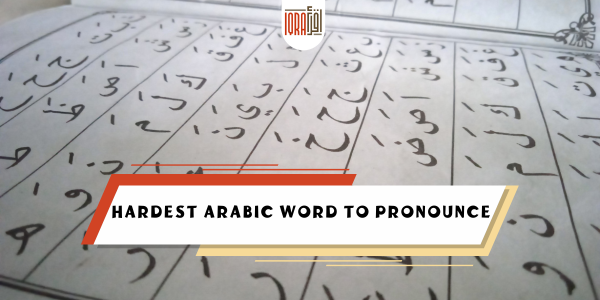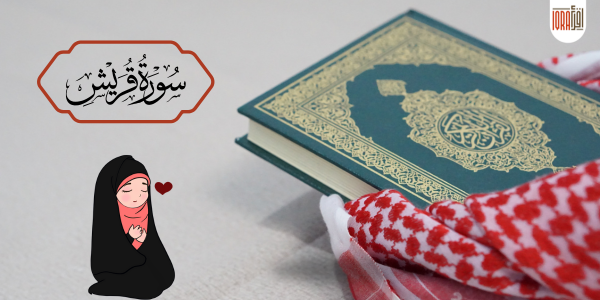In Quranic recitation, the science of Tajweed plays a crucial role in ensuring the proper pronunciation and melodious flow of verses. One of the essential rules of Tajweed is the Qalqalah, a rule that affects the pronunciation of specific letters. Learning and mastering the Qalqalah letters is fundamental for anyone looking to recite the Quran correctly and beautifully.
What is Qalqalah?
The word Qalqalah (قلقلة) comes from the Arabic root meaning “to shake” or “echo.” In Tajweed, Qalqalah refers to a particular sound that occurs when certain letters are pronounced with a bouncing or echoing effect. This rule applies to five specific consonants in the Arabic language, and mastering this rule ensures clarity and precision in Quranic recitation.
The Qalqalah sound occurs when one of the Qalqalah letters appears at the end of a word or is accompanied by a sukoon ( ْ )—a diacritical mark indicating the absence of a vowel.
The Five Qalqalah Letters
There are five letters in the Arabic alphabet that require the Qalqalah rule. These are known as the Qalqalah letters, and they are:
- ق (Qaf)
- ط (Ta)
- ب (Ba)
- ج (Jeem)
- د (Dal)
An easy way to remember the Qalqalah letters is through the phrase قطب جد (Qutb Jad), which consists of the five letters involved.
How to Pronounce the Qalqalah Letters
When one of the Qalqalah letters has a sukoon or appears at the end of a word, you must produce a distinct echoing or bouncing sound. The key is to avoid stressing the letter too much, but instead, allow the sound to “bounce back” slightly, creating a soft vibration or echo.
Here are some simple examples to understand how Qalqalah is applied:
- ب (Ba):
- Example: إبراهيم (Ibrahim)
In this word, the letter ب is pronounced with a slight echo when it has a sukoon, like when stopping at the end of the word: “Ib-ra-heem”.
- Example: إبراهيم (Ibrahim)
- ق (Qaf):
- Example: الحق (Al-Haqq)
When you stop at the end of this word, the ق produces a bouncing sound. The qaf here echoes when pronounced: “Al-Haqq”.
- Example: الحق (Al-Haqq)
- ط (Ta):
- Example: محيط (Muheet)
When stopping at the end of the word, the letter ط bounces, resulting in an echo: “Muheet”.
- Example: محيط (Muheet)
- ج (Jeem):
- Example: الفجر (Al-Fajr)
When reciting and stopping at the end of the word, the ج should produce a Qalqalah sound, echoing slightly: “Al-Fajr”.
- Example: الفجر (Al-Fajr)
- د (Dal):
- Example: أحد (Ahad)
At the end of the word, the letter د has a clear Qalqalah echo: “Ahad”.
- Example: أحد (Ahad)
By practicing these examples, you can begin to understand how the Qalqalah letters behave in different words. These small bouncing sounds are subtle but essential for correct recitation.
Types of Qalqalah
There are three degrees of Qalqalah based on the intensity and position of the letter in the word:
- Minor (Sughra): This occurs when the Qalqalah letter has a sukoon in the middle of a word, such as in the word اقتل (Iqtul). Here, the ط (ta) is pronounced with a slight bounce, even though it is not at the end.
- Major (Kubra): This is when the Qalqalah letter appears at the end of a word, such as in الحق (Al-Haqq). The ق (qaf) has a stronger bounce at the end of the word.
- Supreme (Aqsa): This occurs when the letter is stressed (mushaddad), making the echo even stronger. For instance, in the word أشد (Ashadd), the د is stressed, creating a more pronounced echo.
Why is the Qalqalah Important in Quranic Recitation?
Understanding and correctly applying the Qalqalah rule is crucial for maintaining the integrity of the Quranic text. Mispronouncing these letters can alter the meaning of the words, and it can also make the recitation sound unclear or less eloquent. The Qalqalah adds a rhythmic, melodious quality to the recitation, making it more beautiful and easier to follow.
Practice Tips for Learning the Qalqalah Letters
To master the Qalqalah rule, it is important to:
- Recite with a teacher: A qualified Tajweed teacher can help correct mistakes and fine-tune your pronunciation.
- Listen to skilled reciters: Listening to expert Quranic reciters will give you a clear understanding of how to apply the Qalqalah sound correctly.
- Repetition: Regular practice and repetition will help you internalize the rule and apply it naturally during recitation.
Conclusion
The Qalqalah is a vital rule in Tajweed, ensuring clarity and precision in Quranic recitation. By mastering the Qalqalah letters, students of the Quran can enhance their recitation and connect more deeply with the text. Whether you’re just beginning or are refining your skills, understanding this rule is a significant step toward reciting the Quran beautifully and accurately.
To deepen your understanding of Tajweed and improve your Quranic recitation, consider enrolling in our Tajweed course, where expert teachers will guide you step-by-step in mastering these rules. You can register here and start your journey toward perfecting your recitation today!





0 Comments
Oops comments are disabled